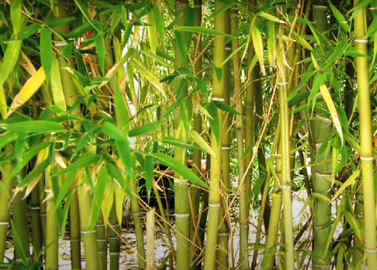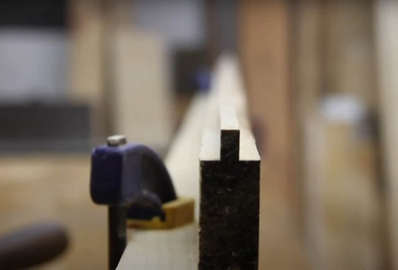How To Remove Bamboo Flooring
Are you ready for a flooring upgrade, but not sure how to remove your current bamboo floors? Look no further!…
Are you ready for a flooring upgrade, but not sure how to remove your current bamboo floors? Look no further! We’ve got you covered with step-by-step instructions on how to remove bamboo flooring.
Before we begin, it’s important to note that bamboo is a type of hardwood flooring, which means it’s typically glued down to the subfloor. This makes removing it a bit more challenging compared to other types of flooring.
But don’t worry, with the right tools and techniques, you’ll have those bamboo planks up in no time! So, gather your tools and let’s get started!
Preparing for Removal: Necessary Tools and Materials
Before you start taking apart your old bamboo floor, it’s important to have all the necessary tools and materials to make the process as smooth as possible.
You’ll need a few basic hand tools like a hammer, pry bar, and crowbar to remove the bamboo planks. You can also use a circular saw or jigsaw to make precision cuts around doorways and corners.
Additionally, a utility knife or scraper will be useful for removing any adhesive left behind after you’ve removed the planks.
When it comes to disposing of the old flooring materials, you’ll need to consider whether or not they can be recycled or repurposed. Bamboo flooring is sometimes made from renewable materials, which means it can be disposed of in an environmentally-friendly way.
However, if your bamboo flooring is not recyclable, you’ll need to find a way to dispose of it properly. Consider contacting a local waste management company to help you dispose of your old flooring responsibly.
Removing adhesive is another important consideration when removing bamboo flooring. Depending on the adhesive used to install your flooring, you may need to use a specialized adhesive remover to break down and remove the glue.
Be sure to do some research to determine the best adhesive remover for your specific situation. With the right tools and materials, removing your old bamboo flooring can be a hassle-free process.
Starting the Removal Process: Removing the First Plank
You’ll want to start by gently prying up the very first plank of your bamboo flooring using a pry bar or similar tool. It’s important to be gentle to avoid damaging the surrounding planks.
Once the first plank is removed, you can move on to the rest of the flooring. To continue the removal process, you’ll need to remove the remaining planks one by one. It’s important to take your time and be careful not to damage the subfloor. You may also need to use a saw or other cutting tool to remove any planks that are glued down.
If you encounter any issues during the removal process, such as damaged flooring or subflooring, you may want to consider flooring repair or eco-friendly alternatives. Once all of the planks have been removed, you can clean up the area and dispose of the old flooring.
You may need to use a scraper or other tool to remove any leftover adhesive or debris. It’s also a good idea to measure the area to determine the amount of new flooring you’ll need to install. With the right tools and a bit of patience, you can easily remove bamboo flooring and prepare for a new installation.
Continuing the Removal: Removing the Rest of the Planks
Now that you’ve successfully taken out the first plank, it’s time to delve into the rest of the process and uncover the hidden challenges that come with it.
The next step is to remove the rest of the planks, using the same technique as before. However, it’s important to keep in mind that the planks will likely be connected by a tongue-and-groove system, so you’ll need to use a pry bar or crowbar to gently separate them.
As you continue removing the planks, it’s important to dispose of them properly. Depending on the condition of the planks, you may be able to sell them or donate them to a salvage yard or reuse center.
If the planks are damaged, you’ll need to dispose of them in accordance with local regulations. Additionally, you may need to repair the subfloor once all of the planks have been removed. This involves removing any remaining adhesive and filling in any gaps or damage to ensure a smooth surface for new flooring.
Once all of the planks have been removed and the subfloor has been repaired, you can begin the process of installing new flooring. Whether you choose to install bamboo flooring again or opt for a different type of flooring, it’s important to take accurate measurements and follow the manufacturer’s instructions carefully.
With patience and attention to detail, you can successfully remove bamboo flooring and replace it with a new and improved look for your home.
Dealing with Adhesive Residue: Tips for Cleaning the Subfloor
Once the planks are taken out, the subfloor may still be covered in sticky residue, requiring extra effort to clean and prepare for the new flooring. Cleaning techniques for adhesive residue may vary depending on the type of adhesive used and the subfloor material.
Here are some tips to help you remove stubborn adhesive residue from your subfloor:
- Scrape off as much adhesive as you can using a putty knife or scraper. Be careful not to damage the subfloor.
- Use adhesive solvents or removers, such as mineral spirits or acetone, to soften the adhesive and make it easier to remove.
- Apply the solvent or remover to the residue using a soft cloth or sponge. Let it sit for several minutes to allow the adhesive to soften.
- Gently scrub the residue with a scrub brush or abrasive pad, using a circular motion to loosen and remove the adhesive.
- Rinse the subfloor thoroughly with clean water and let it dry completely before installing the new flooring.
It’s important to note that some adhesives may require specific solvents or cleaning techniques, so be sure to check the manufacturer’s instructions or consult with a professional if you’re unsure.
Removing adhesive residue from a subfloor can be a time-consuming and messy process, but it’s an essential step in preparing the surface for new flooring. Taking the time to properly clean and prepare your subfloor will help ensure a smooth and secure installation for your new flooring. With these tips, you’ll be ready to tackle any adhesive residue left behind by your old bamboo flooring.
Finishing Up: Final Steps and Preparing for Your Next Flooring Project
Before beginning your next flooring project, it’s important to take the necessary steps to properly finish up and prepare the subfloor for optimal installation.
After removing your bamboo flooring, it’s essential to carefully inspect the subfloor for any remaining adhesive residue. Using a scraper or sander, you can remove any remaining adhesive, ensuring a smooth and level surface for your next flooring project.
When selecting your next flooring material, consider alternatives to bamboo flooring. While bamboo is known for its eco-friendliness and durability, there are other options that may better suit your needs.
Hardwood flooring, for example, is a classic and timeless choice that can add warmth and character to any room. Laminate and vinyl flooring are also popular options that are both affordable and easy to install.
Before installing your new flooring, be sure to take accurate measurements of the room to ensure you have enough materials and minimize waste. Additionally, make sure to properly acclimate your new flooring to the room’s temperature and humidity levels before installation. This will help prevent any warping or buckling of the materials over time.
As you finish up your flooring project, remember to take the necessary steps to properly dispose of any debris or waste.
With a clean and level subfloor and careful consideration of your flooring options, you can successfully complete your next flooring project and enjoy a beautiful and functional space for years to come.
Conclusion
Overall, removing bamboo flooring can be a challenging but doable DIY project with the right tools, materials, and know-how. It’s important to take the time to properly prepare before starting the removal process, including gathering all necessary tools and materials and protecting yourself and your surroundings.
Once you’ve started removing the first plank, it’s important to continue with care and attention to avoid damaging the subfloor or other surrounding areas. Once all planks have been removed, it’s essential to thoroughly clean the subfloor and remove any adhesive residue.
This will ensure that your next flooring project can be installed smoothly and without any issues. Remember to take accurate measurements and consider all aspects of your new flooring choice before starting your installation. With patience and attention to detail, you can successfully remove your bamboo flooring and prepare for your next home improvement project.



